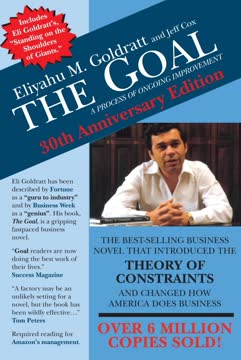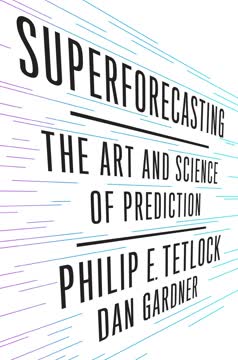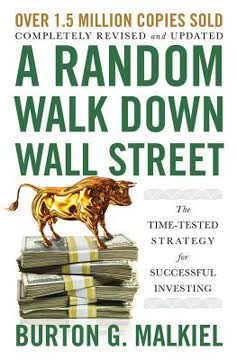Key Takeaways
1. Output: The Foundation of Economic Well-being
Large volumes of output—not large quantities of money—are what make nations prosperous.
Output as the ultimate constraint. A nation's ability to consume and invest is ultimately limited by the amount of goods and services it produces. While money facilitates transactions, it's the real output that determines a country's standard of living. A government can't simply print money to make its citizens wealthier; it needs to increase the production of goods and services.
Focus on production. A nation's prosperity hinges on its capacity to generate a substantial volume of goods and services. This principle underscores the importance of policies that foster productivity, innovation, and efficient resource allocation. Consider two scenarios:
- A country with abundant natural resources but low productivity will likely be less prosperous than
- A country with fewer resources but a highly productive workforce and advanced technology.
Wealth as a claim on output. Financial assets, such as stocks and bonds, derive their value from the underlying productive assets and the future output they are expected to generate. Wealth is essentially a claim on future output, and its value is contingent on the continued production of goods and services. If output collapses, the value of financial assets will also decline.
2. GDP: Measuring the Economy's Size and Health
The most widely accepted measure of national output is gross domestic product (GDP).
GDP avoids double counting. GDP is designed to measure the total value of goods and services produced in a country, avoiding the pitfall of counting the same output multiple times at different stages of production. This is achieved by focusing on either the value added at each stage or the final sales to consumers.
Expenditure method. The expenditure method is the standard approach for calculating GDP, summing up all spending on final goods and services within a country. This is represented by the equation: GDP = C + I + G + EX – IM, where:
- C = Consumption by households
- I = Investment in productive assets
- G = Government spending on goods and services
- EX = Exports
- IM = Imports
GDP as a key indicator. GDP serves as a crucial indicator of a nation's economic health, providing insights into its production capacity, standard of living, and overall economic performance. It is used to track economic growth, compare living standards across countries, and assess the impact of economic policies.
3. Trade Imbalances: Borrowing from the Future
Countries running trade surpluses today expect to get back additional output from their trading partners in the future.
Exports vs. Imports. When a country exports more than it imports, it is running a trade surplus, effectively lending funds abroad. Conversely, when a country imports more than it exports, it is running a trade deficit, borrowing from abroad to finance the difference. These imbalances are recorded in a country's balance of payments (BOP).
Current account and financial account. The current account records trade in goods and services, while the financial account records financial transactions, such as sales of stocks and bonds. A deficit in the current account is necessarily accompanied by a surplus in the financial account, and vice versa.
Long-term implications. Current account deficits are not inherently negative, but they imply that a country is consuming more than it produces and accumulating debt that must be repaid in the future. The key is whether the borrowed funds are used to increase productive capacity and future output.
4. Money: Facilitating Exchange and Influencing the Economy
Money is not one “of the wheels of trade: It is the oil which renders the motion of the wheels more smooth and easy.”
Money simplifies transactions. Money serves as a medium of exchange, simplifying transactions and making trade more efficient. Without money, economies would be forced to rely on barter, which is cumbersome and inefficient.
Prices of money. Money also affects interest rates, exchange rates, and the aggregate price level (inflation). These variables can be thought of as "prices" of money:
- Interest rate: The price of holding money or the cost of investment funds
- Exchange rate: The price of one currency in terms of another
- Aggregate price level: The average price of goods and services in terms of money
Central bank influence. Central banks can influence these variables by controlling the money supply. Increasing the money supply tends to lower interest rates, depreciate the exchange rate, and increase the price level (inflation).
5. Central Banks: Guardians of Monetary Policy
Central banks can literally create money at will, and they can also destroy it.
Controlling the money supply. Central banks play a crucial role in managing the money supply and influencing economic activity. They have the power to create money at will and can also contract the money supply.
Tools of monetary policy:
- Discount rate: The interest rate at which commercial banks can borrow from the central bank
- Reserve requirement: The proportion of deposits that banks are required to hold in reserve
- Open market operations: The purchase and sale of government securities to influence the money supply
Balancing act. Central banks often face a trade-off between competing objectives, such as low inflation, high employment, and stable exchange rates. They must carefully weigh these objectives and use their tools to achieve the best possible outcome for the economy.
6. Nominal vs. Real: Distinguishing Price Changes from True Growth
Only when their access to goods and services rises—because of an increase in Q—are they truly better off in economic terms.
Nominal vs. Real GDP. Nominal GDP measures the value of output at current market prices, while real GDP measures the quantity of output after controlling for inflation. Real GDP is a more accurate measure of economic growth and a nation's standard of living.
Nominal vs. Real Interest Rates. Nominal interest rates are the rates quoted at banks, while real interest rates reflect the effective rate of interest after controlling for inflation. Real interest rates are a better indicator of the true cost of borrowing.
Nominal vs. Real Exchange Rates. Nominal exchange rates are the rates at which currencies are exchanged, while real exchange rates adjust for differences in inflation between countries. Real exchange rates are a better indicator of a country's competitiveness in international trade.
7. Expectations: Shaping Economic Reality
Managing expectations may well be the most important function of macroeconomic policy, both monetary and fiscal.
Self-fulfilling prophecies. Expectations about the future can have a powerful impact on economic outcomes. If individuals and firms expect inflation, they may demand higher wages and prices, leading to actual inflation. Similarly, expectations of recession can lead to reduced spending and investment, causing a downturn.
Managing expectations. A key role of macroeconomic policy is to manage expectations and guide them in a favorable direction. Central banks, for example, strive to maintain credibility and convince the public that they will effectively combat inflation.
Managing demand. Keynesian fiscal policy aims to coordinate expectations in a favorable direction through expansionary fiscal policy. By increasing government spending and running budget deficits, the government can signal better times ahead and encourage private sector spending.
8. Fiscal Policy: Government's Role in Managing Demand
Nothing is required, and nothing will avail, except a little clear thinking.
Government spending, taxation, and budget deficits. Fiscal policy involves the use of government spending, taxation, and budget deficits to influence macroeconomic performance. Expansionary fiscal policy, which involves increasing government spending or cutting taxes, is often used to stimulate demand during recessions.
Keynesian economics. Keynesian economics emphasizes the role of government in managing aggregate demand and stabilizing the economy. During periods of high unemployment, Keynes advocated for deficit spending to create new demand and boost output.
Potential problems. Deficit spending may lead to inflation, higher interest rates, and crowding out of private investment. The effectiveness of fiscal policy is also debated, with some economists arguing that it has limited impact due to factors such as rational expectations and Ricardian equivalence.
9. A Historical Perspective on US Monetary Policy
You shall not crucify mankind upon a cross of gold.
Early monetary policy. In the early years of the United States, the government defined the value of the dollar in terms of precious metals, creating a fixed exchange rate. Paper money was issued by private banks and could be redeemed for coins.
The Federal Reserve. The Federal Reserve was created in 1914 to provide a more elastic money supply and serve as a lender of last resort. However, the Fed was constrained by the gold standard and was reluctant to lower interest rates during the Great Depression.
Modern monetary policy. After abandoning the gold standard, the Fed gained greater control over monetary policy and began to target short-term interest rates. In recent years, the Fed has also experimented with quantitative easing to influence longer-term interest rates.
10. GDP Accounting: A Framework for Understanding the Economy
The notion of national output lies at the heart of macroeconomics.
Measuring national output. GDP accounting provides a framework for measuring the value of a nation's output and understanding the sources of economic growth. There are three basic approaches to GDP accounting: value added, income, and expenditure.
Expenditure approach. The expenditure approach is the most widely used method for calculating GDP, summing up all spending on final goods and services. This is represented by the equation: GDP = C + I + G + EX – IM.
Investment, savings, and foreign borrowing. GDP accounting also allows us to understand how investment is funded, identifying the roles of private savings, government savings, and foreign borrowing. This provides insights into the sustainability of economic growth and the potential risks associated with large current account deficits.
Last updated:
Review Summary
A Concise Guide to Macroeconomics is highly praised for its clarity and accessibility. Readers appreciate its concise yet comprehensive coverage of macroeconomic principles, making it ideal for beginners and those refreshing their knowledge. The book's structure, focusing on output, money, and expectations, is well-received. Many find it helpful for understanding economic concepts in the news and real-world applications. While some note its brevity limits depth, most agree it provides a solid foundation. Readers particularly value the author's balanced approach and acknowledgment of macroeconomics' limitations.
Similar Books









Download PDF
Download EPUB
.epub digital book format is ideal for reading ebooks on phones, tablets, and e-readers.




